
UTAR has become a more vibrant learning hub with artwork by students and staff splashed across the walls in the campus. The murals are mainly located at stairwells to encourage UTARians to take the stairs. This series will chronicle each piece and the artists’ inspiration and motivation for creating them. This first instalment begins with the artwork done by the Student Representative Council of Sungai Long Campus and Lee Kong Chian Faculty of Engineering and Science’s (LKC FES) Department of Mathematical and Actuarial Sciences (DMAS).
Representing the SRC, Actuarial Science student Wu Chu Jing hoped to brighten up the campus and bring smiles to UTARians through his murals. “As I was using the stairs to go between classes, I thought that it would be great if I could put colours on the walls to make the campus livelier,” he said.
With supervision from the late Dr Teh Chee Seng and former SRC member Lau Jing En, Wu painted eight murals over a period of one year with assistance from his friends. They are located between the first and second floor in KB Block. Below, we showcase each and the inspiration behind them.
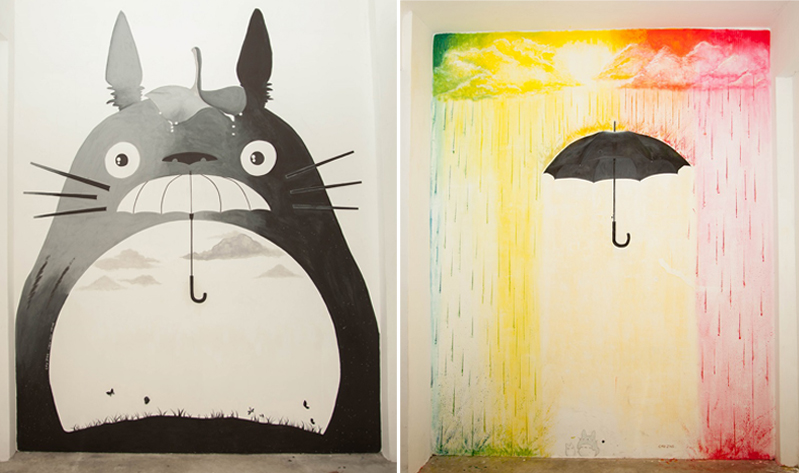
Left: Wu, Lim and Chia’s Totoro
Right: Wu painted a miniature Totoro in the rainbow mural
With the help of his coursemates Lim Chew Ying and Chia Xin Ying, Wu’s first mural was Totoro, a friendly wood spirit from the Japanese animated fantasy film My Neighbour Totoro. Wu said he chose to paint the character because it played a significant role in many students’ childhoods.
Together with Lim, they were inspired to paint a rainbow mural based on Wu’s favourite quote — “Life has ups and downs, sometimes the sun shines, sometimes the rain pours, but don’t forget that it takes both sunshine and rain to make a rainbow”.
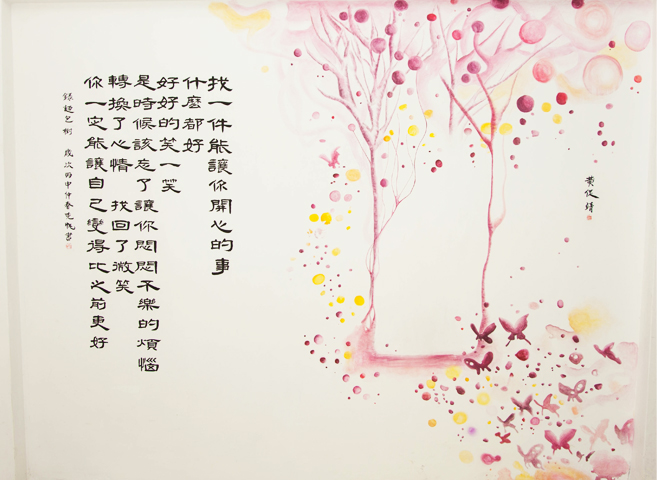
Wu and Soh’s tree swing mural
Teaming up with Accounting student Soh Keh Fan, they painted a colourful tree swing inspired by Indonesian artist Luqman, together with a quote using Chinese calligraphy. “I hope this quote will be able to help students to cope with stress, and that they’ll learn how to recharge themselves by spending time on their hobbies and interests before getting back to work,” Wu said.
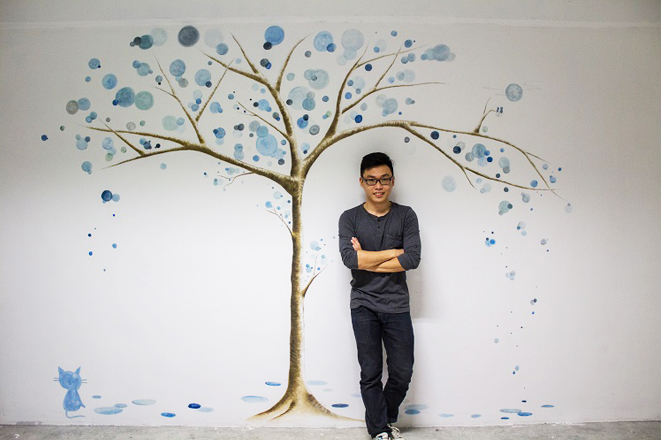
Wu with his tree mural
Another mural took on the form of a tree. Wu said, “I decided to paint a tree to make the stairwell look livelier. The tree symbolises an individual and the leaves are drawn in the shape of a bubble to represent the events and the people in our lives. As life goes on, we need to meet different people and gain new experiences in order to grow like a tree.”
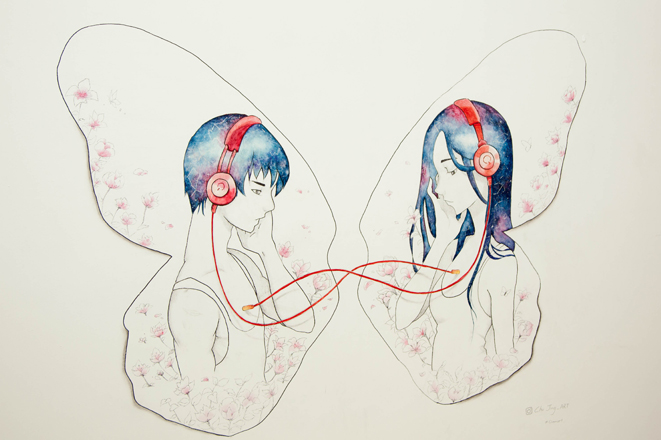
Wu inspires UTARians through his paintings
Inspired by Instagram artist Qinni, Wu said this mural aimed to remind us to be mindful of others and to be sincerewhenever we interact with people. “Sometimes we encounter situations where we get carried away, ignoring the other person’s thoughts and feelings entirely,” he added.
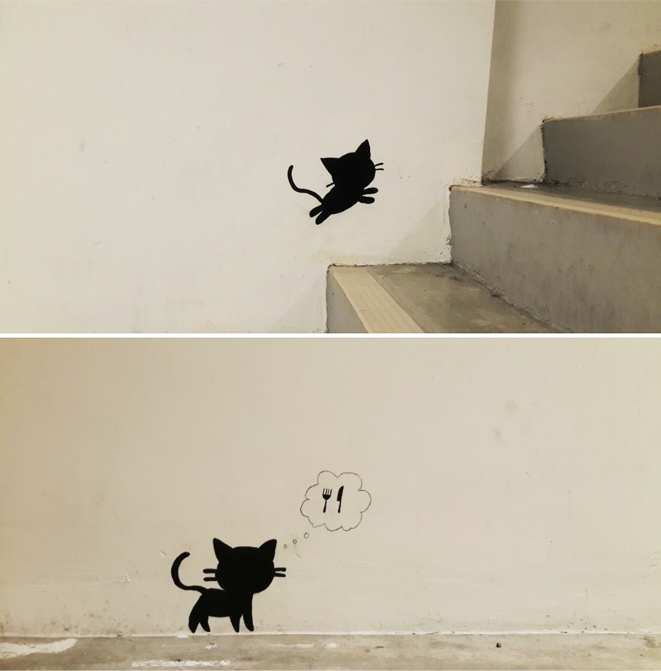
The little cat murals
The student artist also teamed up with Quantity Surveying student Thai Chiew Ann and Traditional Chinese Medicine student Lim Guat Jin for the little cat murals. These little cats reflect common daily dilemmas faced by students.
“The cat thinking about food was inspired by UTARians’ common problem in deciding what to eat, while the running cat aimed to let students know that they are not going to class alone,” said Wu.
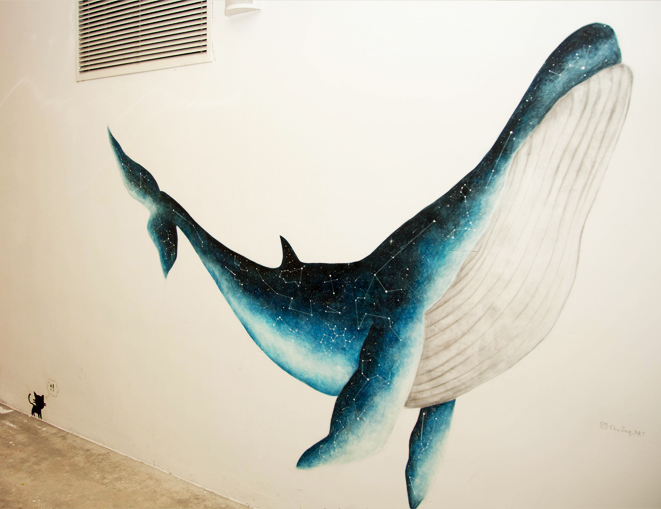
The Constellation Whale
With the Constellation Whale mural, Wu stated his belief that a whale is a symbol of achiving the impossible. “The constellation of stars reminds me that the world is really big, beautiful and full of opportunities. It inspires me to never stop learning and discovering more,” he said. Wu’s other artwork can be found at Instagram.com/chujing_art.
Besides Wu, 18 academics from LKC FES’ Department of Mathematical and Actuarial Sciences (DMAS) hoped to address negative perceptions of mathematics through their mural projects.
“We decided to make maths fun for everyone. We’ve recreated historically prominent math puzzles into interactive murals, so that everyone can enjoy fun brain-teasers once in a while,” said Dr Teoh Lay Eng.
Led by Dr Teoh, the team consisted of DMAS Head of Department Dr Chang Yun Fah, Dr Gloria Teng, Chin Ching Herny, Choo Ley Ya, Chew Chun Yong, Yap Lee Ken, Dr Mahboobeh Farid, Chuah Hock Lung, Kuang Kee Seng, Dr Koh Siew Khew, Tan Zong Ming, Khow Weai Chiet, Dr Pan Wei Yeing, Dr Chen Huey Voon, Ng Wei Shean, Dr Ng Kooi Huat, and Dr Goh Yong Kheng.
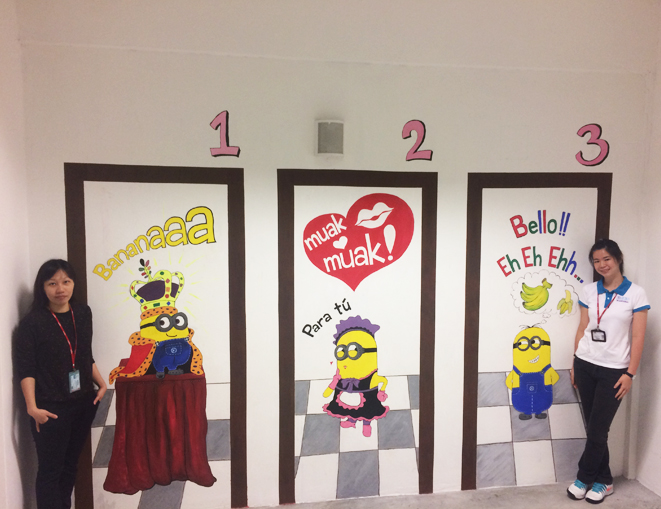
Dr Teoh (left) and Choo with the Monty Hall Problem mural
“The Monty Hall Problem is a classic probability puzzle where a player has to decide the odds of winning the treasure. Traditionally, the Monty Hall Problem you find on the internet normally depicts two goats and a treasure or car behind the doors, but we decided to substitute them with the yellow minions so that it will appeal to students,” said Choo, one of the muralists.
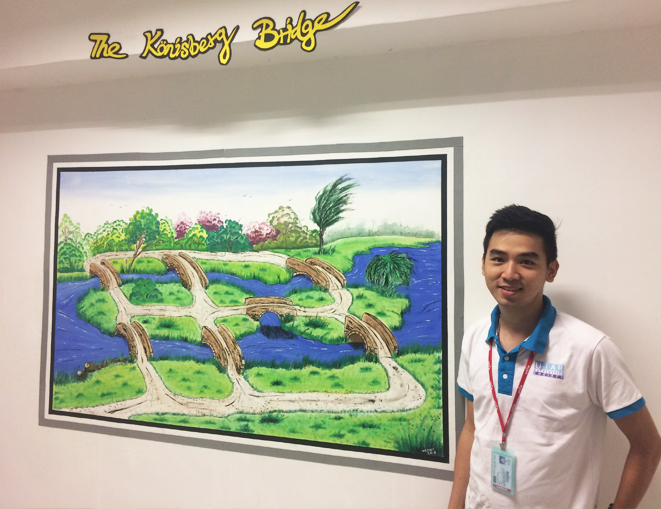
Chin with the Seven Bridges of Königsberg mural
The Seven Bridges of Königsberg is a notable problem in the history of mathematics. The city of Königsberg in Prussia, now Kaliningrad, Russia was set on both sides of the Pregolya River, which included two large islands that were connected to each other as well as the mainland by seven bridges.
Chin said, “Leonhard Euler’s question on how people could visit every part of the town by crossing each bridge only once, laid the foundations of graph theory and prefigured the idea of topology. This branch of mathematics has applications in social networks, operations research, biology and others.”
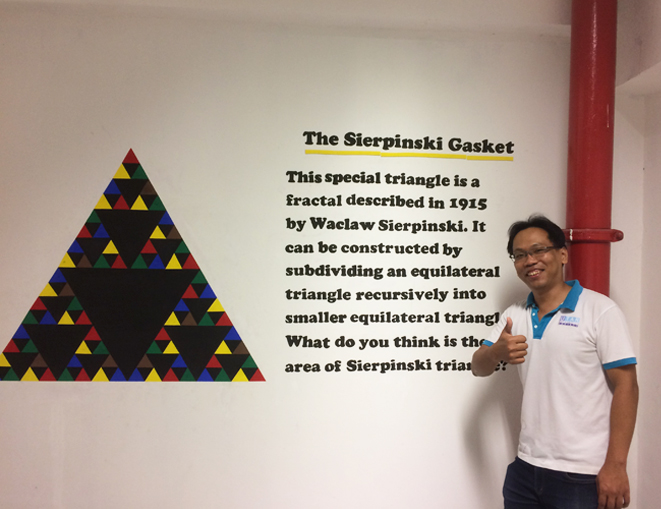
Chew with the Sierpinski Gasket mural
The Sierpinski Gasket is a fractal described by Waclaw Sierpinski in 1915. A special triangle is constructed by subdividing an equilateral triangle recursively into smaller equilateral triangles.
“Throughout the course of history, mathematicians explored these patterns and have applied them in various fields ranging from network traffic to stock market prediction, and even to neuroscience and creative arts,” said Chew.
The team hoped that these murals would inspire people to dive deeper into maths. These theories were developed from observations of real-world phenomena throughout the course of history. Today, the mathematical theories depicted have led to major technological advancements in our society.
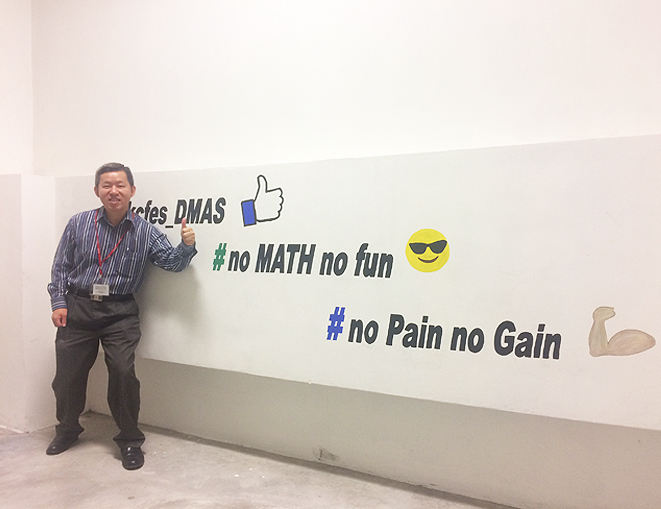
Dr Chang’s mural letting us know the world is boring without maths
More murals from other faculties in both Sungai Long and Kampar Campuses are in progress to beautify the UTAR environs.
Wholly owned by UTAR Education Foundation Co. No. 578227-M LEGAL STATEMENT TERM OF USAGE PRIVACY NOTICE